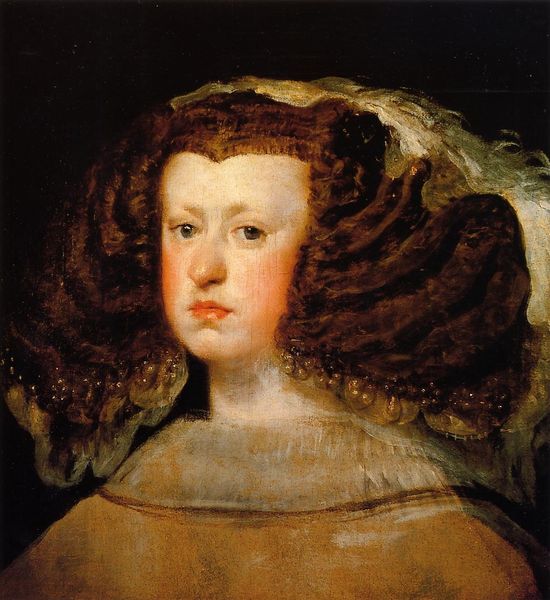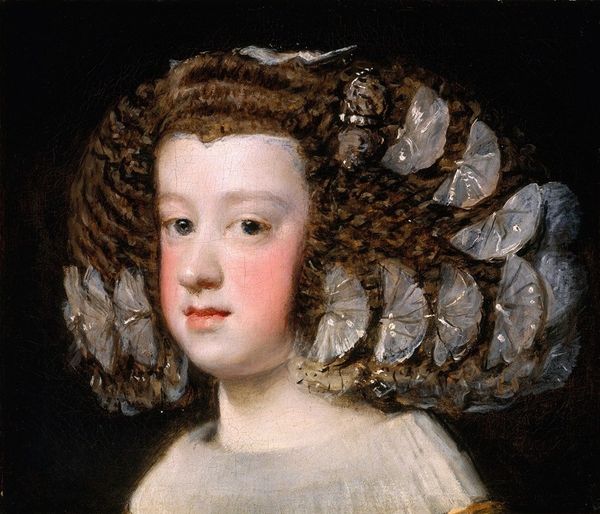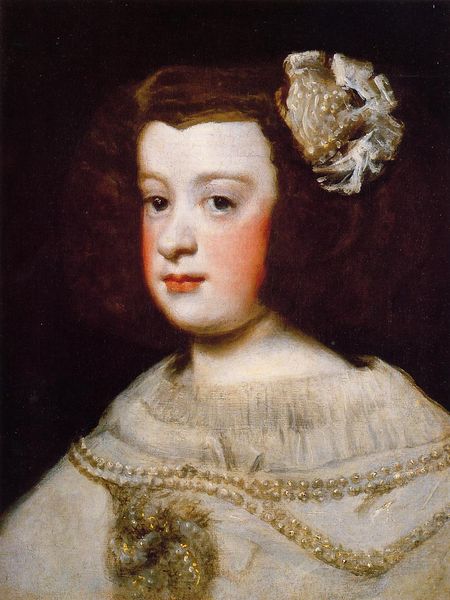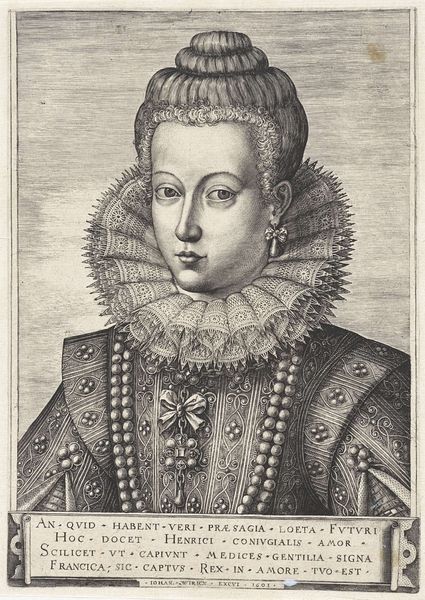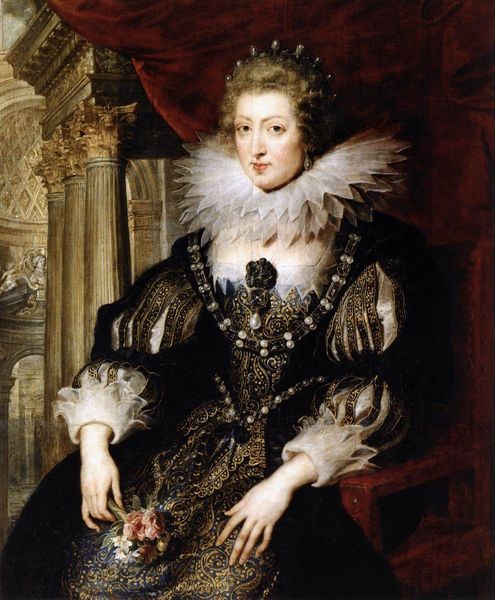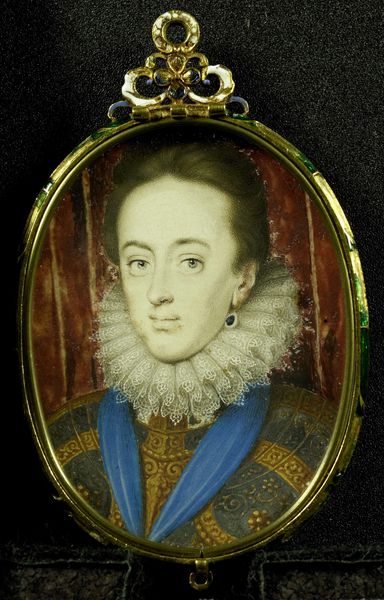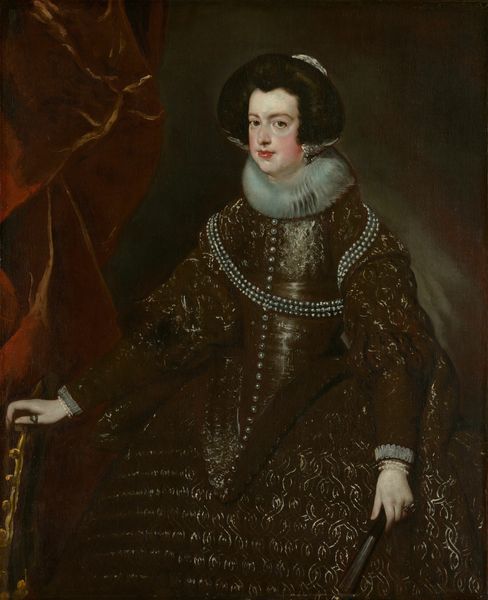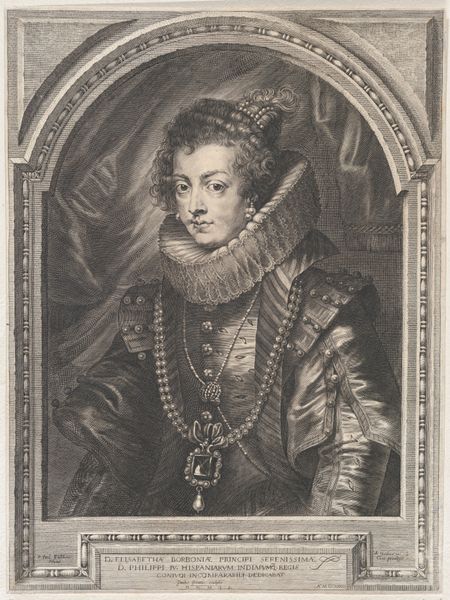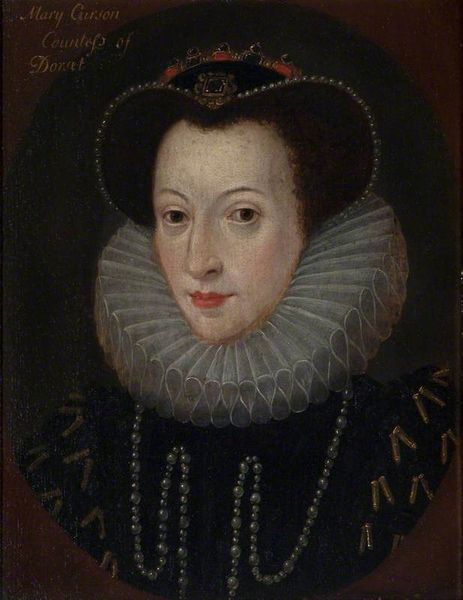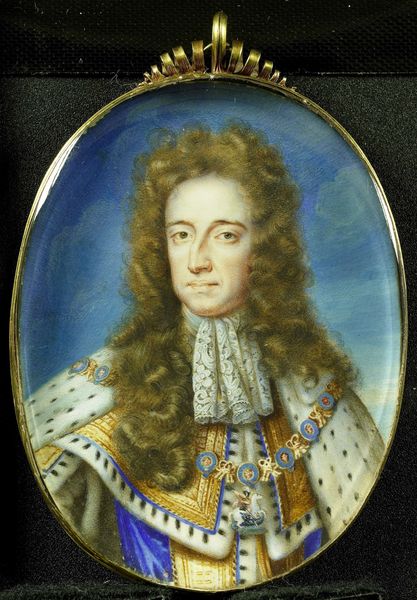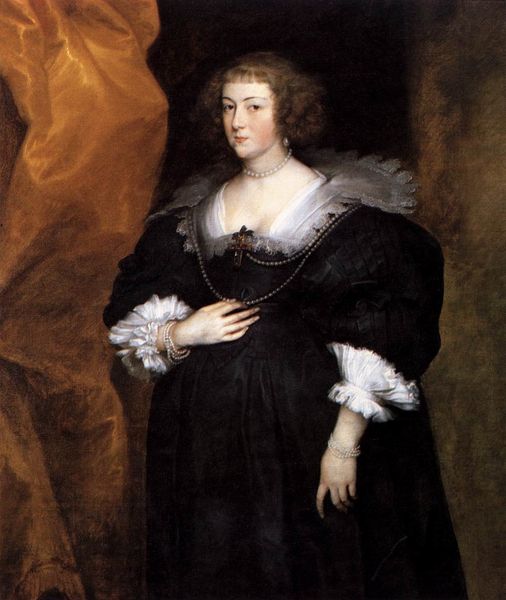
painting, oil-paint
#
portrait
#
baroque
#
portrait
#
painting
#
oil-paint
#
figuration
#
history-painting
#
academic-art
#
realism
Dimensions: 44 x 55 cm
Copyright: Public domain
Curator: Standing before us is Velázquez's captivating portrait of "The Infanta Maria of Austria," painted around 1630. The artist's masterful handling of oil on canvas brings to life the subtle nuances of his young royal subject. Editor: What strikes me first is that cool detachment. A fortress of fur, an expression barely there... the overall effect is remarkably, almost aggressively, poised. Curator: Yes, the visual language of power and dynasty is definitely at play. The austere formality reflects her status, yet, look closely and you'll notice subtle details. The soft light caressing her face and rendering the delicate texture of her hair. Editor: Her clothing looks so heavy. What an immense ruff around her face! And, perhaps I’m reading into things, but is there a flicker of... something, behind that guarded gaze? Almost melancholy? Curator: The ruff acts as both protection and adornment. The artist captures the burden of her destiny, the knowledge of a life preordained. And the weight of her status sits there. But it is interesting how portraits often capture these feelings in time of how they relate to the present. Editor: Velázquez does capture it perfectly; that fleeting, ephemeral moment just beneath the surface of imposed identity. And this young Infanta— a symbol, a future queen—feels intensely human, in this moment. But how easily does she feel forced? Curator: Think, too, about the symbols implicit within this depiction of royalty; in this picture alone it does seem he attempts to humanize someone who almost cannot be seen as it. Yet, he still presents this figure as a pillar of European power structures. Editor: Ultimately, though, I can't shake this odd sense that Velázquez saw straight through the pomp and circumstance, directly to a young woman standing there on the edge of her own historical narrative. Curator: Right, there’s that tension – between objective record and genuine perception – and it’s that very tension, I think, that makes the painting so haunting and relatable even today. Editor: It certainly elevates it beyond a simple historical document and opens a window into the timeless complexity of identity.
Comments
No comments
Be the first to comment and join the conversation on the ultimate creative platform.
